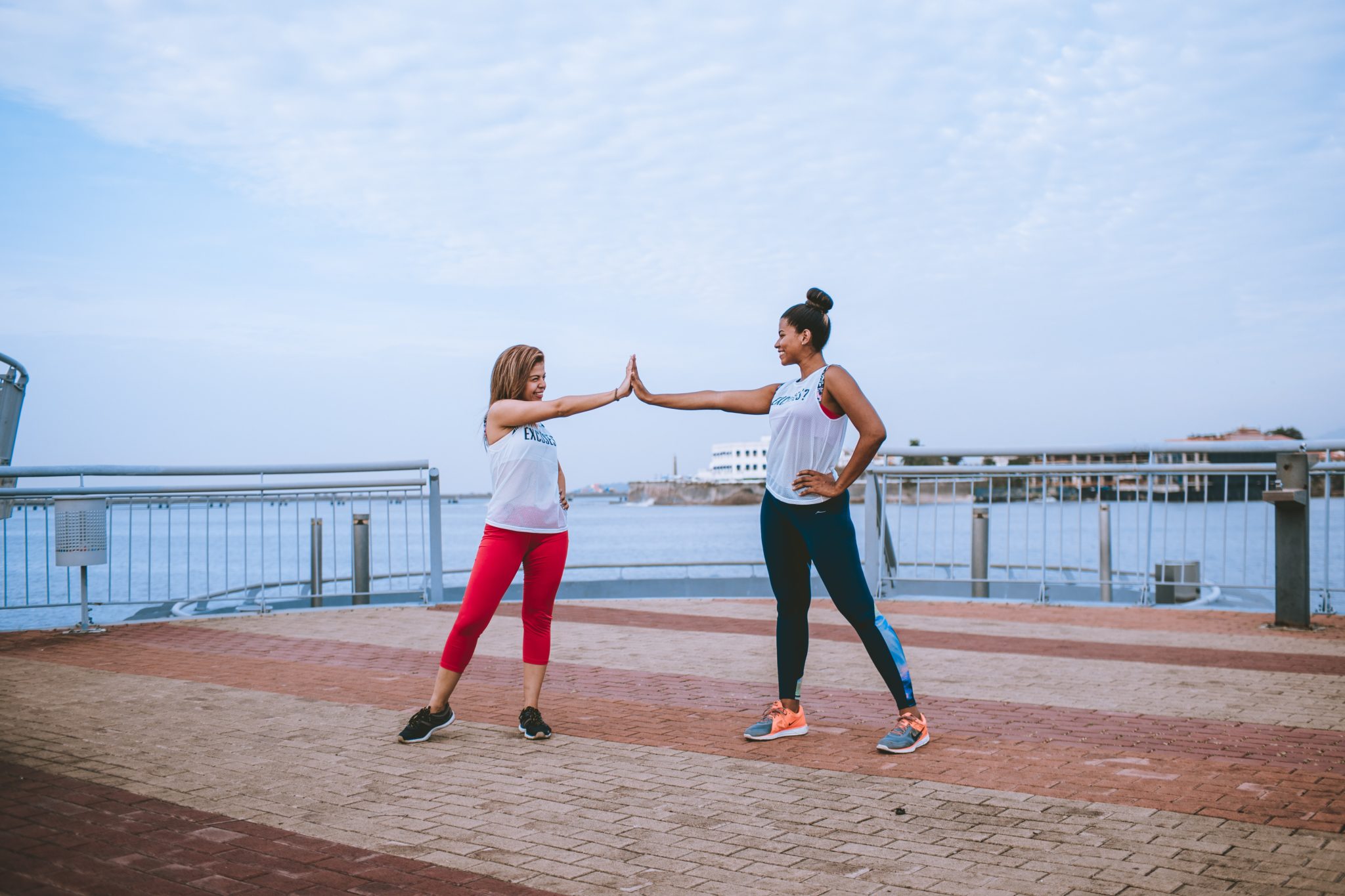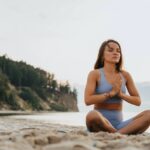Seasons are a fact of life. Everything comes and everything goes with relatively predictability: the moon waxes and wanes every single month, no matter what goes on in the world underneath. Summer fades to fall, which brightens into winter, and then bubbles into spring once more. Humans age while babies are born. Plants flower, animals hibernate, and there’s a delicate balance that’s struck between predator and prey that can only be described as a most divine ballet. These things can be counted on, week after week, year after year, and oftentimes, we can find a sense of comfort in their familiarity.
When it comes to the human experience, however, many of these ‘seasons’ are not so comfortable. In fact, when people enter new stages of their lives, it can cause a serious sense of being unsettled or a missing identity — especially when these new stages concern the body and its ability to function effectively, from a cause that’s entirely out of our control. Humans age and we can’t stop the passage of time; unprecedented accidents happen that might render us injured; we develop a chronic condition that prevents us from living life as we had previously; or maybe you just have stiff joints. It happens.
Because entering these new phases of our lives generally isn’t because of any choice or decision of ours, it often comes with many emotional complexities. While working with a mental health professional can take care of your consciousness as you, and there are technologies to ensure that you remain healthy and safe (see if one is right for you), taking care of our body and mind is your own prerogative. Even if you find yourself defaulting into stagnation, yoga can be exactly what you need to instill movement and energy back into your life.
You don’t need fancy Lululemon gear or flexible joints in order to partake in the amazing benefits that yoga has to offer. In fact, all you need is the ability to breathe and a willingness to look at your true self unflinchingly. Simply put, yoga is mediation set to movement — these movements can be big and ecstatic, or small and incremental, but the effect is all the same. By focusing on your breath and allowing your body to flow through simple movements, you become familiar with the inner workings of your bones and muscles and, not by coincidence, you can find a sense of peace with it. That’s the goal with yoga — to find peace — and any physical benefit is just the cherry on top.
Yoga is important for people in all stages of life, but is perhaps essential for those dealing with aging or mobility issues. Yoga is scalable to every person’s abilities, preferences and goals, which makes it a good fit for any person who desires to move their body, gently get back their mobility and feel better than they have in a years (both mentally and physically). Here are several simple yoga exercises to incorporate into your daily life to become less sedentary and get in touch with your inner self once again, no matter where’s she’s hiding:
Mountain Pose & Tree Pose
These two poses are done standing, and can be done one right after the other to get your prana, or energy, to move throughout your body. For mountain pose, stand with your feet hip distance apart and press firmly into the ground with the ball and heel of each foot. Roll your shoulders up towards your ears, and melt your shoulder blades down your back. Stand tall through the crown of the head, and if your balance allows it, you can close your eyes. You hands can be placed anywhere they feel comfortable, although the most common placements are on your hips (for balance and stability), reaching down towards the floor, in prayer at your chest, or lifted high above your head to stretch the shoulders. Once you feel comfortable in mountain pose for several breaths, practice with tree pose! Challenge your balance by lifting one leg and placing the foot on either your ankle, calf or thigh (never the knee) — take several breaths, then switch feet. For those who find themselves feeling wobbly, you can keep the toes of the lifted foot on the ground, keep the eyes open, or place a hand on a nearby wall. Cycling through the hand positions of mountain pose and the feet position of tree pose get blood moving throughout the entire body, without manipulating the body in extreme ways.
Crescent Lunge & Pyramid Pose
These two poses are also related and can be done one right after the other, in order to feel the subtle movements of the body. For pyramid pose, stand tall with your feet together, then take one leg and step it 1-3 feet in front of the other — the distance will depend on your flexibility and mobility, so don’t be worried if your feet are rather close together. Both heels will be planted on the floor. In traditional pyramid pose, the practitioner will bend at the hips over the forward leg, but I invite you to keep your torso upright so that you can transition seamlessly into crescent pose. To do so, bend the knee of the front leg to the best of your ability — this bend can be deep or it can be slight, but the effect is all the same. Lift the heel of your back leg and aim to straighten the knee of the same leg. Again, the effort is what matters here, not the result. To come out of the pose and switch legs, straighten the knee and step your back leg up to meet the front. Then, step back with the opposite leg and repeat the motions.
Staff Pose & Seated Forward Bend
These poses are done sitting on the ground, with the legs extended straight out in front of you. If needed, place a pillow or blanket under your buttocks — and if you have sensitive knees, you can roll up a blanket and place it under them for support. Staff pose is relatively simple: legs are as straight as they can go, heels press into the ground, and toes point up towards the sky. Your arms are straight by your side, palms pressed against the ground if they can reach. Sit tall with spine straight, reaching up out of the crown of your head. For such a simple pose, it can have profound effects. Seated forward bend is exactly what it sounds like: exhale and shift forward at the hips, and bring your chest as close to your thighs as possible. Aim to maintain the straight spine your found in staff pose, and place your hands on your thighs or shins for support. It doesn’t matter how low you go, as long as you feel a sensation in the backs of your legs. Tighten your abs to lift back to staff pose, and repeat as many times as you would like.
Cat & Cow Pose
These movements are so often done with one another that it’s hard to imagine them separated!
To begin, come into a tabletop position on your hands and knees — hands directly under the shoulders, knees directly under the hips. If you are on a hard surface and your knees are sensitive, place a blanket underneath them. Cat pose resembles an angry cat: arch your back upward, drop the head and bring your chin towards your chest. You should feel a nice stretch right between your shoulder blades. Similarly, cow pose resembles a cow: drop the belly, arch the back, lift the tailbone and push your chest forward and through your shoulders. Here, your face and eyes should be facing up so that you feel a nice stretch in your chest and belly. Move into cat pose whenever you exhale, and move into cow pose whenever you inhale. These movements are great for spinal flexibility.
Walking Meditation
This special meditation is done while standing, with eyes kept open. First, establish your breath by feeling the rush of air through your nostrils as you inhale and exhale. Do this several times, being mindful of the rise and fall of your chest as you do so. Maybe you even feel your belly move as your breaths become bigger and fuller, nourishing your body with oxygen. Then, begin walking in a circle — slow paced, methodical movements, felt as if you were moving through honey. Feel every part of your foot touch the ground, then peel off of the ground to take your next step. Don’t see with your as, as much as your feel with your body. Move as slowly as you’d like, and stop at whatever point feels natural. Bringing awareness into your body can bring about self-awareness and self-love in unprecedented amounts.






Leave a reply